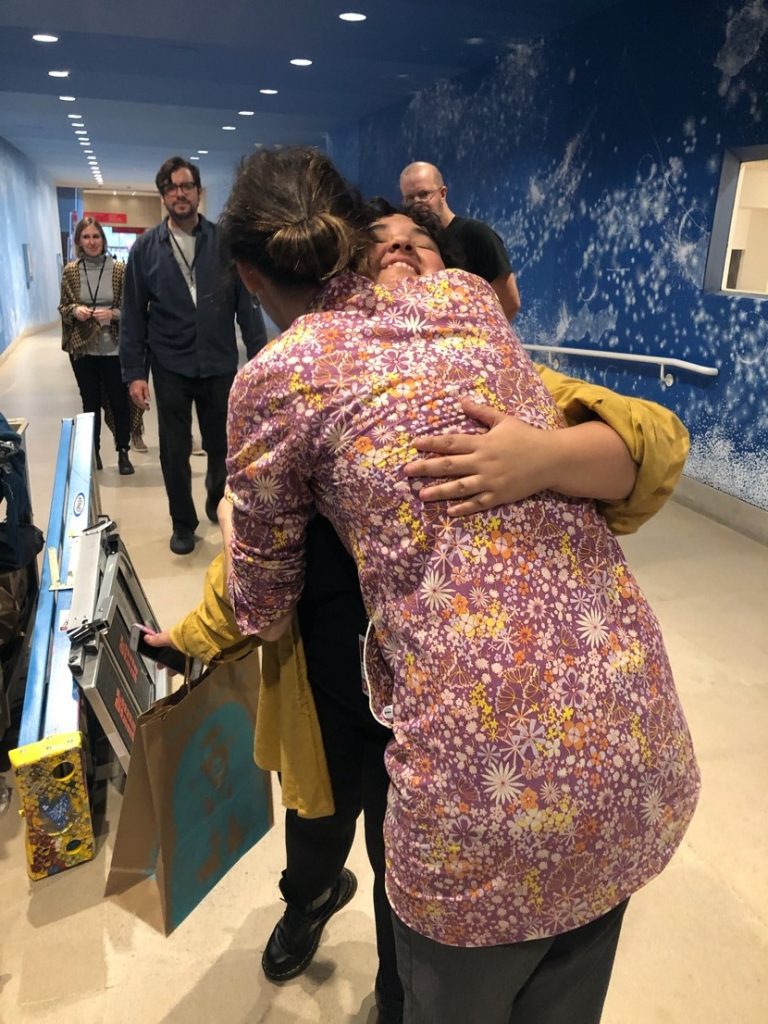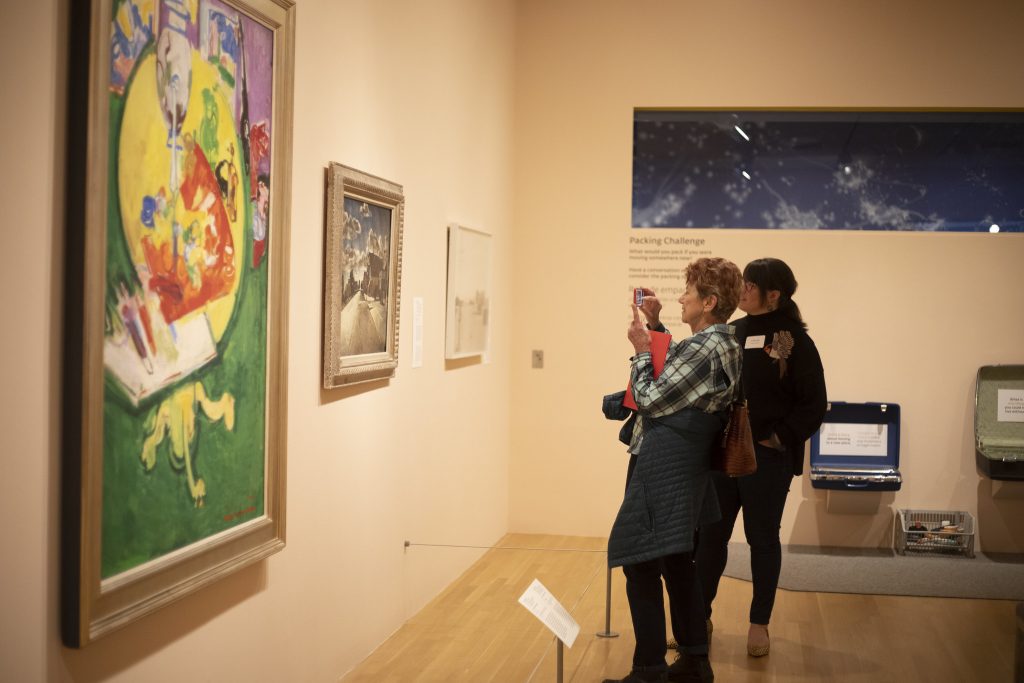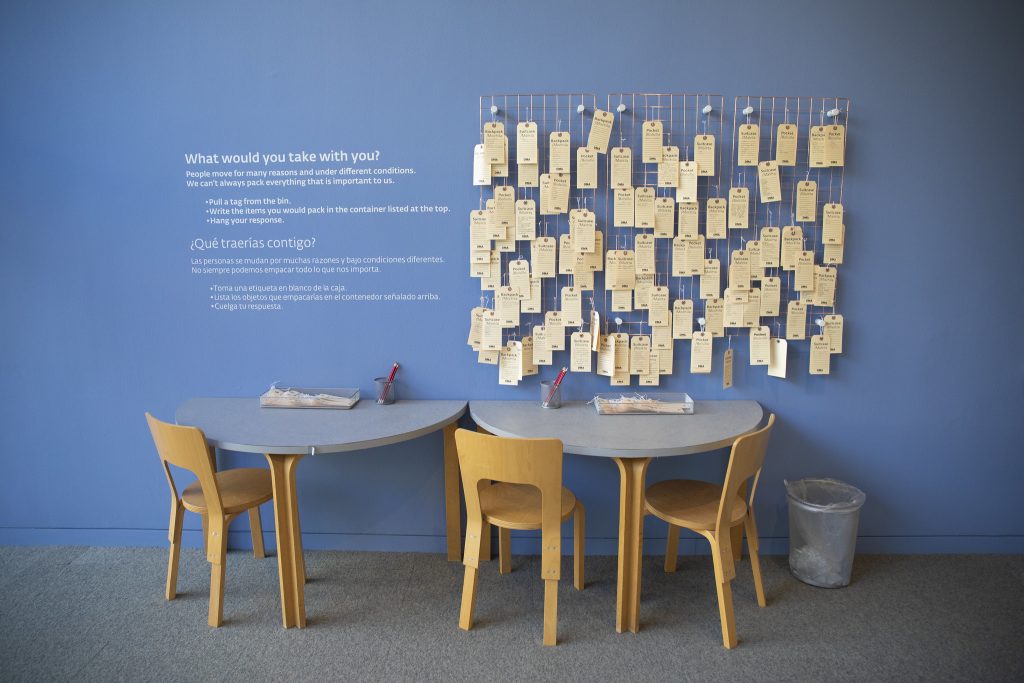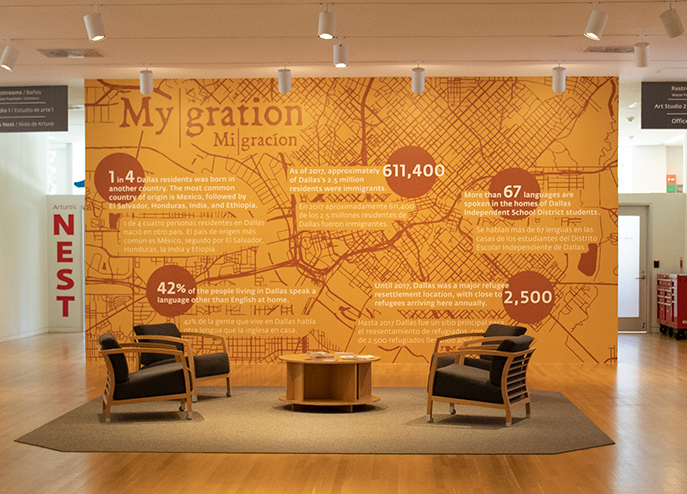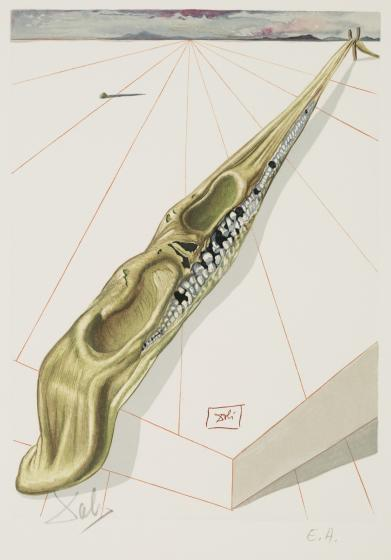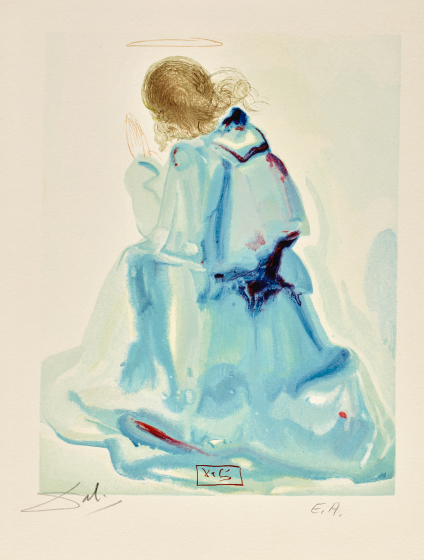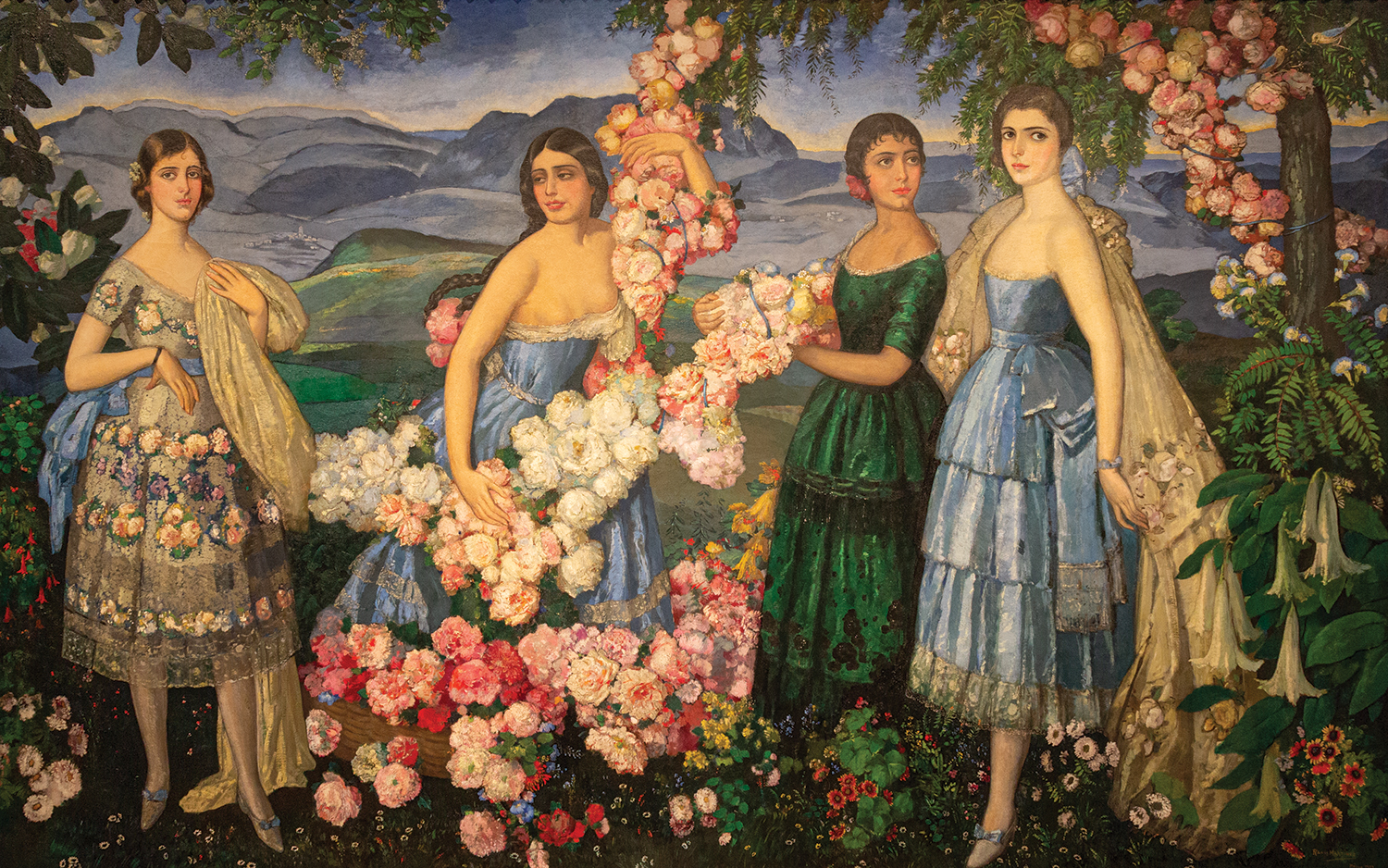In fall 2019, Sandra Cinto’s large-scale mural Landscape of a Lifetime was brought to life in the Museum’s Concourse by the artist, along with the help of some DMA staff and a team of artist assistants from around Dallas. The team spent roughly three weeks working on the 153-foot mural, which features 24 shades of blue shifting from night to day, intricate pen drawings of celestial elements such as stars and clouds, and low-level audio of crashing waves, rustling leaves, birds, and crickets.

To coincide with the recent launch of our virtual tour of the mural, we reached out to some of the participants who helped bring this work of art together and asked them to reflect on their experience. Here’s what they had to say:
“Learning Sandra’s simple drawing vocabulary of dots and lines, which we deployed in the cavernous Concourse in the form of stars, bridges, mountains, and clouds, created a link to an ancient human past of painting cave walls, tombs, temples, canyons, and shelters with an extended family that speaks a common language of art.” —Tino Ward


“Being an artist is a selfish pursuit. Even when it comes to a mural, helpers are treated as a necessary evil, paycheck players brought in to meet a deadline. Sandra Cinto is a magical exception to that rule. Her mural, Landscape of a Lifetime, allowed us lucky few to feel truly invested as this piece took shape, while Sandra deftly handled the key elements. Rather than keeping us at arm’s length, she built a nest in the clouds and drew us in. I was given the job of drawing stars. Up close, they seemed tedious and mundane, but when taken in from a distance, they shimmer—not unlike Sandra herself. I had the privilege of being part of a project that was communal in the best sense of the word—an enterprise of the spirit. Thank you, Sandra.” —Russell Sublette
“Working on Landscape of a Lifetime was one of the most memorable experiences of my life. The opportunity to learn from such a successful artist was an honor. I made many meaningful connections that I am eternally grateful for.” —Meena Valentine

“Sandra Cinto firmly believes that everyone can draw. The elements that you see throughout the mural are composed of simple marks—the stars are lines radiating from a center point, the mountains quick penstrokes—but with many people drawing, they come together in a multitude to form a harmonious whole. That is another component of Sandra’s philosophy: communities of people can be an incredible source of love, care, and creative potential.” —Hilde Nelson

